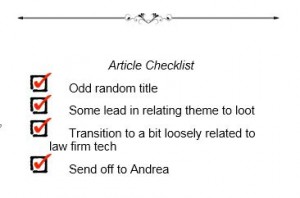March brings the first of spring’s gentle caresses to the little law office on the prairie and with them comes that mild madness that draws us out of our winter dens and onto the thawing landscape far earlier than prudence would dictate. Now, the heart becomes a bit lighter, lifted out of winter’s gloom; buoyed by the hope that we will be able to get an early jump on all that must be done once summer comes. For it must be a madness that possess us to venture out; March is nothing if not uncertainty – for what was a snowbank yesterday may be mud today and ice tomorrow and a balmy morning breeze can be either a harbinger of an evening’s icy blast or the handmaiden to a sun-drenched afternoon. While this madness may tempt us to greet Ostara sky clad, the prairie March teaches us to approach this turning point in the year systematically and to keep both winter’s outerwear and spring’s gum boots at hand.
Transitions seem beckon protocol and celebration – new years, birthdays, weddings, the seasons are noted and marked in a variety of ways. And yet, too often, the more mundane transitions that are a common place to a law practice go without a trace of pomp (to say nothing of the lack of circumstance) or protocol. Now, it would be madness to suggest that we provide cake and cookies each time we set up a new client file, receive a retainer, complete our monthly accounting, or close out a matter (though I will admit that completing one’s income tax does seem to call for chocolate and single malt) but these events, and the myriad of other transitions that abound in our practices, do call out for some type of protocol; some system to guide us as we mark their occurrence.
Perhaps it is the influence of my pilot training, but here at the little law office at the prairie checklists are the de facto protocol for common transitions. I like checklists for a number of reasons – they are simple (all you need is pen and paper to create a template) they are flexible (changes can be easily made), they are visual (I can see where I am and where I’m going at a glance), they can help prevent that nagging feeling you forgot something, and they are supported by my practice management software (supported, heck, they are built in and can be automated).
The only downside to checklists is that there will be a point when you start to think you might have a few too many and that it is somewhat ridiculous to keep filling them out now that you’ve been in practice for umpteen years now. First, let me go on record as saying there is no such thing as too many checklists (I have 13 pages of checklists for the single engine Cessna I fly and 24 pages for the twin engine Beechcraft and that’s just for the non-emergency stuff) but if it makes you feel better, simply stuff your checklists into a 3 ring binder, call it your risk management manual and send a copy to your malpractice insurance provider; they’ll love you for it and who knows, you might even get a discount on your premium. As for the assumption that experience trumps the checklist – let me point out that the pilots who safely landed their plane in the Hudson credit their success not to their 1000’s of hours of experience, but to their training and to their checklists. They flew their plane by “the book” not by experience.


